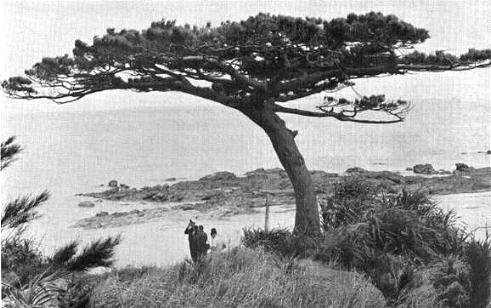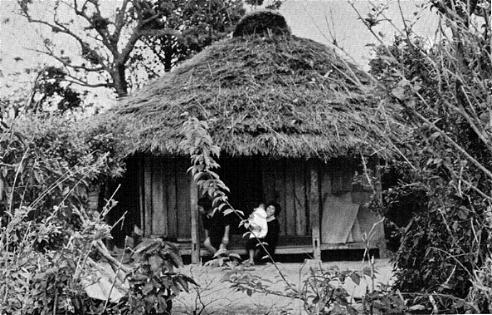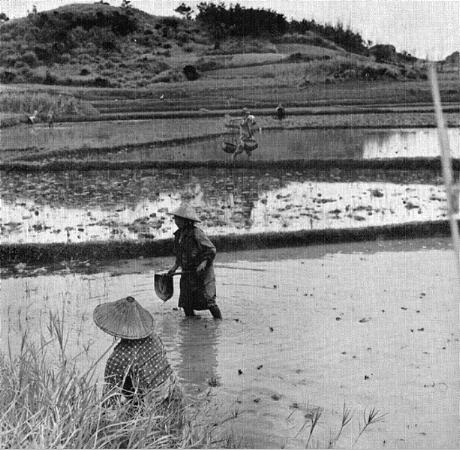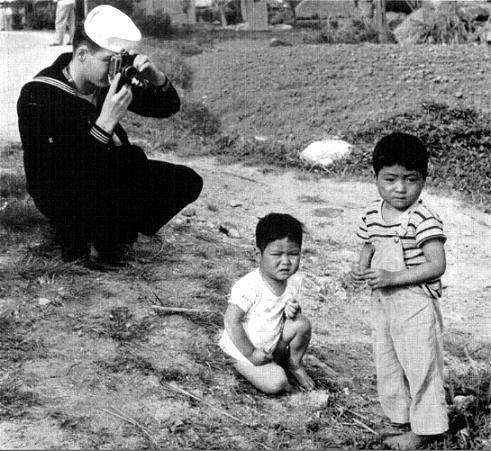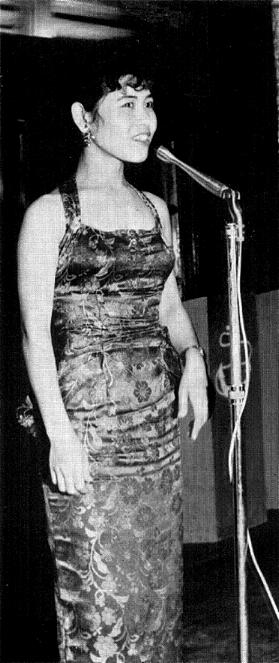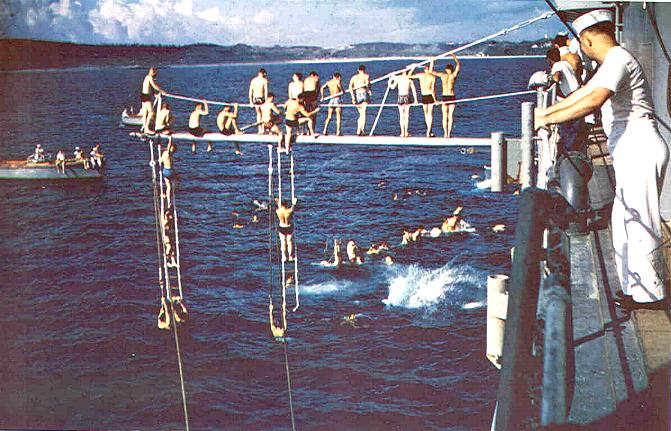After participating in the amphibious exercises on Iwo Jima, the Helena dropped her hook in Buckner Bay, Okinawa for three days of R & R.
Okinawa in one of the 108 islands that make up the Ryukyu Islands and one of the top priority projects of the Department of Defense. As a permanent base it will be the United States' Gibraltar of the Pacific.
The strategic importance of Okinawa has been recognized for years. In 1853, Commodore Matthew C. Perry, on his way to Japan, stopped off in Okinawa and established a coaling station. Today, Okinawa fuels destroyer types and is one of the ports of call of the Formosa Strait Patrol Force.
In addition to the service clubs and recreational facilities, the crew had an opportunity to visit some of the points of interest on the island.
There was Nakagusuku Castle, a 500-year old castle that marks the site of World War II's bloodiest battles on Okinawa. It was built about 1450 as a fortress for Gosamaru, the ruler of Shuri, one of Okinawa's three fifteenth century kingdoms. The battered ruins overlook Buckner Bay where our forces hit the beach in 1945.
On the southern tip of the island is the Virgin's Cave where 122 school girls were killed during the battle for Okinawa. During the mopping up operations, an American soldier called for those inside to surrender. The story goes that the Japanese had told the girls that all American soldiers were rapacious beasts. They refused to leave the cave. After several warnings, there was no alternative but to burn the cave out with flame throwers. A monument now marks the spot of the Virgin's Cave.
Shuri Castle, the ancient capitol of the Ryukyus, was the Okinawan headquarters of the Japanese Army. It was practically obliterated during World War II by naval air attacks and bombardment.
Suicide Cliffs is the name of a bluff on the southern coast where hundreds of Japanese soldiers committed mass suicide by plunging into the sea rather than surrendering or risking capture.
On Ie Shima Island, the Ernie Pyle Memorial marks the spot where the war correspondent was killed by machine gun fire three months before the war was over. |
